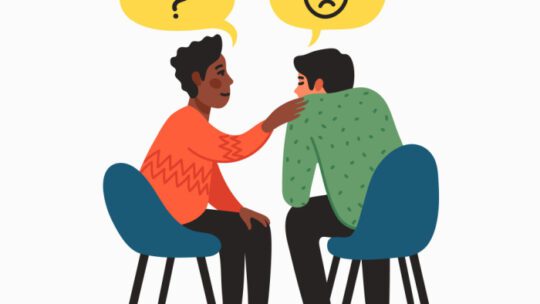
Trade up authenticity for empathy
If you have the word authenticity on your bingo card at a social media conference, you’ll likely have it filled in the first five minutes.
That’s because thought leaders have been throwing this word around since the beginning of social media time.
As newly minted TikTok phenom Mandy Patinkin would say, we “keep using that word, I do not think it means what you think it means.”
Authenticity means genuine. Truthful. Reliable. Legitimate.
And it’s the wrong word.
It’s not sinking in. That’s why we’ve had to keep preaching it for years. In a 2019 Stackla report, almost 100 percent of marketers think they are presenting authentic campaigns, and only 50 percent of their audience believe the campaigns are actually authentic. There’s clearly a disconnect.
Authenticity Can Feel Like Marketing
Yes, you should be real. But you can present REAL data to sell a product. You can be TRUTHFUL with information when you’re building a campaign. But in the end, authenticity can still feel a whole heck of a lot like marketing.
And human beings 👏 do 👏 not 👏 like being marketed to.
Okay, what word should we be coaching on, then? I think we need to stop talking about authenticity and more about building social media posts with empathy.
It’s important to understand that empathy and sympathy are not the same. Boiled down, sympathy is “I know how you feel.” Empathy is “I feel how you feel.” It’s recognizing both your needs AND someone else’s.
Yes, you want to market a thing, and do it your way, saying what you want to say. On the other hand, if you use empathy, you put yourself in the shoes of the person on the other side of that Instagram account and say to yourself, 'But THEY want something else, and I know why.'
Empathy and Science
And before you tune out all this squishy stuff, let me hit you with some science. (Science matters.)
A neuroscientist by the name of Antonio Damasio studied people who had damage to their emotional brain centers; they weren’t able to feel emotion. What he found was that they could make logical calculations–like looking at pros and cons–but they couldn’t make a decision. Subconsciously, we’re using emotions to do that. We can use EMPATHY to influence that.
This makes a lot of people nervous, because we’ve created a false dichotomy that there are hard skills and soft skills. That empathy is innate to some and absent in others. Specifically, that those in technical roles aren’t good with people, and marketers are extraverts. That women are too sensitive and men can’t have feelings.
Knock it off. Skills are skills, and all can be learned. Think about it. Yes, Eddie Van Halen (RIP, Eddie) was a natural guitar hero. But you, too, can learn to play. You may never be on a stage shredding for a living, but you could, with practice, be able to be in a Van Halen cover band that plays bars on the weekend for fun.
Additional Science
Here's more science. Check out this amazing study where researchers measured two tactics to increasing empathy for homelessness. This is especially applicable to social media. One group was shown data about the problem. One group heard a story from a homeless person. The response was measured in donations to a homeless actor outside after the study. Spoiler alert: Facts tell, stories SELL.
Example–and so many brands still do this–you don’t think about how someone uses specific platforms. You put horizontal images in vertically oriented stories. You tag 15 people in a tweet just so they’ll see it and now every like interrupts their feed. And you do things to followers that you hate in your feeds–why? You already have empathy here if you use the platforms you post on. Embrace it!
Here are a few quick ways to gain empathy skills and put them to use in your day-to-day:
- Put yourself in the shoes of your followers. It’s not about you, it’s about them.
- Take time to understand their problems, challenges and needs from their perspective. Google empathy maps and put them to use.
- Tell a story. Social media is visual, and for some reason we all think that we should slap a few data points on a graphic and that makes us real. Use the visual nature of the platforms to evoke an emotional connection with your graphics and use the text to be good storytellers.
Maya Angelou said it far better than I ever could. “I've learned that people will forget what you said, people will forget what you did, but people will never forget how you made them feel.”
Change it up, people. Make them FEEL.
Carmen Collins is employee/employer brand and social media lead at Cisco
